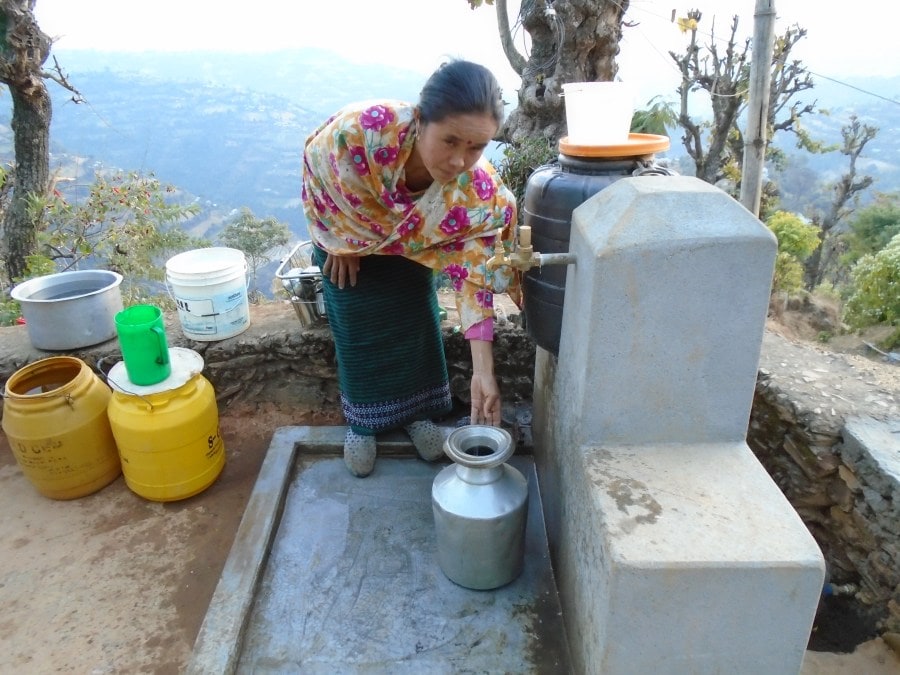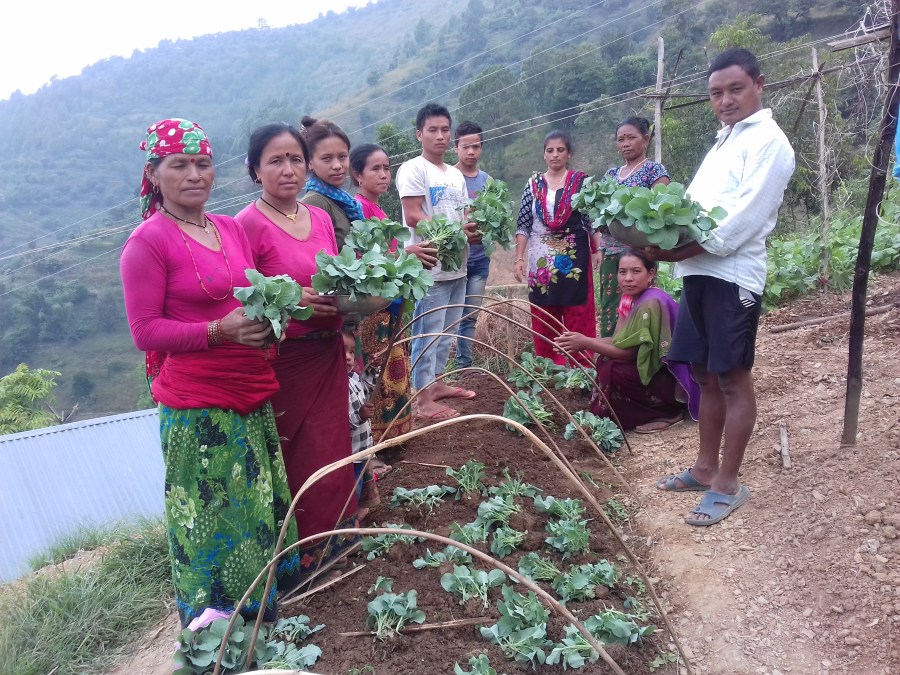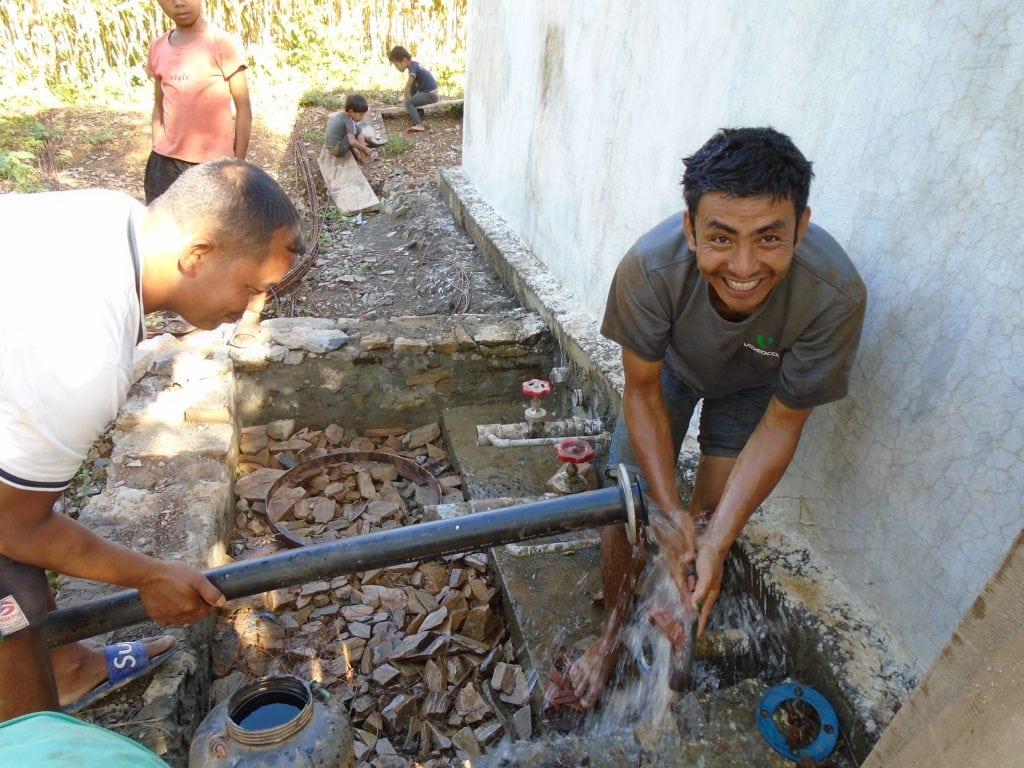A village where solar energy is used to bring water
An article featuring two communities supported by Renewable World’s Solar Water Pumping Project (SolarMUS II) in Nepal was published by Ujyaalo Online – a Nepali language news outlet – on 13 January 2018. Find out how our SolarMus II project funded by the Big Lottery Fund has made a real difference to the lives of people living in the communities of Jimi and Naramgaon in Gulmi District. Translation in English by Lata Shrestha, Renewable World Ambassador
Ujyaalo Online, Saturday January 13 2018
The two communities Jimi and Naramgaon have recently benefited from the provision of solar energy. The communities have benefited not only from access to drinking water for households, but also from access to water for small scale irrigation, allowing them to start growing vegetables which has contributed to increased income. Both the communities previously lacked access to drinking water because their closes water source was located far from the community in the valley. In both communities, a water source in the valley has been tapped and pumped using the solar power to bring water to villages on the ridge of the hill.
Due to the lack of access to water in these communities, they were facing difficulties for many years. However, now, in these two communities, Gulmi 4, Birbhash-Jimi and Chatarakot 3, Hardineta – Naramgaon, 163 households have water access directly to their houses.
The project was financially supported by Renewable World and iDE Nepal; SAPPROS Nepal have provided technical support together with the local NGO Navaprabhat Yuva Sangh who has been engaged in community mobilisation.

With support from this project, the local people have built taps at every house and have installed a water metering system to manage and distribute the water. According to Maya Reshmi, the communities who lived far from the water source had never even dreamt that they would have access to water in their own house with a metering system, and access to water for irrigation: “I had never even dreamt that we would have a tap in every household in this community. Now we have access to water in our house, it has made our lives easier, especially to keep our houses clean and it is easier to send children to school on time. Before the project, to bring just 15 litres of water, we were compelled walk for one and a half hours.”
According to the technical information provided by regional project officer for Renewable World, Mr Ganga Prasad Acharya, in Jimi, the water source is from Bahun Khola and with the help of solar power is being been lifted 61m up hill. 10,000 litres is being pumped to serve 14 households in the upper community, and the remaining 71 households are also benefitting from an improved gravity fed source. In Naramgaon, water from the Chanauti river is being lifted 207m up hill, pumping 30,530 litres per day and serving 78 households and 1 school. He confirmed that Renewable World has adopted the ‘one house one tap’ scheme for water access being promoted by the government of Nepal.

After having access to water, the majority of women have become engaged in vegetable production, and the income that they earn is being used to cover household expenses. According to the Bhirbhas ward secretary, Farsa Bahadur Karki, the productive use of water has contributed to increased income in the household, especially for women who are engaged in vegetable production. He confirmed that the female farmers have earned $100-300 per month in some areas.
Farsa Bahadur Karki said that before the project, people were dependent on getting drinking water from the distant water source, but after having access to water directly at their homes, they have benefitted, and have been able to take the opportunity to use water productively and increase their income. He stated that these kind of solar water provisions are most applicable in areas where the water available at the source is small, and the community is made up of a concentrated cluster of households located above the source.

The local organisation, Navaprasad Yuva Sangh explained that a Water User Committee group has been established in each community to maintain and manage the system. The committee have collected $10 per households towards a repair and maintenance fund, and each household will pay for water based on their consumption. This project has also been supported financially and technically by the local ward office and the rural municipality, and the local people have provided ‘in kind’ [labour and material] as well as financial contributions of up to $12,000 to complete this project.
(Unfortunately the original article in Nepali is no longer accessible)
Photographs from Jimi and Naramgaon taken by Renewable World field staff during project delivery.